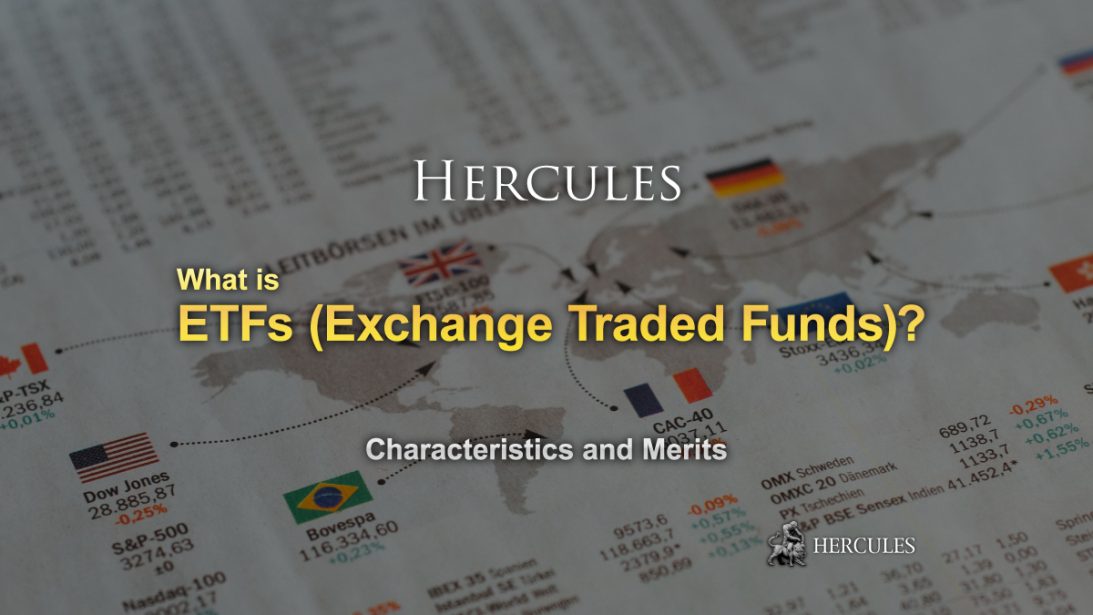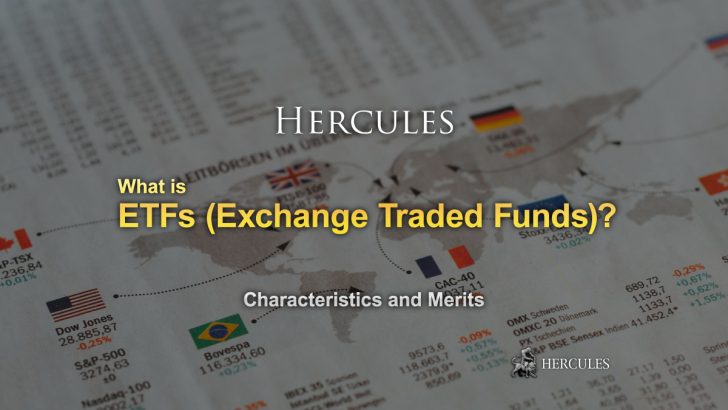Categories
What is ETFs (Exchange Traded Funds)? - Characteristics and Merits
What is ETFs (Exchange Traded Funds) and what is the merit of trading ETFs?


- What is Exchange Traded Fund (ETF)?
- ETFs trading volume is growing
- Mechanism of ETFs
- Characteristics of Exchange Traded Fund (ETF)
What is Exchange Traded Fund (ETF)?
ETFs are investment trusts listed on financial exchanges such as the Tokyo Stock Exchange, with the aim of achieving investment results that are linked to movements of specific indices, such as the Nikkei Stock Average and TSE Stock Index (TOPIX).
ETF attracted attention as a stock that had a net share of inflows due to an increase in its trading share when the market plunged.
It was noted that the performance is easy to grasp as the market rises and falls and the transparency of operations is high.
ETF stands for “Exchange Traded Funds” and is called “Listed Investment Fund”.
Indexes linked are not only stocks, but also bonds, REITs, currencies and commodities.
Investment destinations have expanded to all over the world, making it easy to invest in hard-to-find countries, regions and assets.
There is an “index fund” in investment trusts as a similar product.
Both ETFs and index funds have the same management purpose, and are index-linked investment trusts that aim to achieve investment results that are linked to movements of specific indices.
Normally an index fund can be traded only once a day with a base price calculated once a day, but ETFs use that index fund at the discretion of the investor, within the trading hours of the financial instruments exchange, like stocks.
So it is easier to buy and sell ETFs in real time while watching the market movement.
Go to Hercules.Finance Main Page
ETFs trading volume is growing
Listed on the Toronto Stock Exchange of Canada in 1990, “TIPS35” (Toronto 35 Index Participation Units) is said to be the world’s first ETF.
Since then, the ETF market has expanded rapidly.
Not only ETFs, but also ETCs (Exchange Traded Commodities) linked to commodities and commodity indices, and ETNs (Exchange Traded Notes) that trade securities that are linked to a specific index are traded on the exchange.
These three are collectively called ETP (Exchange Traded Products).
Combining ETFs with these ETCs and ETNs, the number of assets and the balance of assets under management have increased dramatically, and the development of the ETP industry including ETFs is remarkable.
As of the end of December 2017, a total of 7,178 ETPs were listed on exchanges around the world by a number of asset management companies, and the assets under management are approximately US$4,835.3 billion.
Mechanism of ETFs
ETFs are financial instruments exchanges that are traded just like ordinary stocks.
The ETF has two markets, the “issuing market” and the “secondary market”.
In the issue market, the ETF beneficiary right is set or canceled (exchanged) between the ETF management company and the designated participant, and the number of issued beneficiary right units of the ETF increases or decreases.
The beneficiary rights of the issued ETF are distributed in the secondary market (exchange).
The issuing market is sometimes called the primary market.
The securities company of the designated participant is different from the securities company that mediates transactions in the general investor market.
Go to Hercules.Finance Main Page
Characteristics of Exchange Traded Fund (ETF)
As an option of easy diversified investment, Exchange Traded Fund (ETF)’s popularity is growing.
ETF investment can be expected to have the same effect as buying an index for a relatively small amount.
ETF investment can also reduce the risk compared to investing in individual stocks.
Why there are more brokers and traders investing on Exchange Traded Fund (ETF)?
Here are some of the main characteristics of Exchange Traded Fund (ETF).
1. ETF is suitable for long-term investment
ETF is suitable for long-term investment because it has a low cost of ownership.
There are two types of costs for trading and holding ETFs which are trading cost and holding cost.
Trading cost is the same brokerage commission as stock.
However, since these fees have been decreasing recently, the burden of brokerage commissions has been lightened and investment has become easier.
Cost of ownership is mainly trust fees.
It is generally said that ETFs have lower trust fees than ordinary unlisted investment trusts.
Unlike ordinary unlisted investment trusts, ETFs are cheaper to manage because they charge less fees and administrative expenses on the funds.
Go to Hercules.Finance Main Page
2. Easy to understand price movement
The ETF is operated so as to be linked to the movement of the index, so the movement of the price is easy to understand.
The market price of ETFs is traded by investors with the current movement of the index based on the net asset value (base value) per unit, so the market price will generally be linked to the index.
Therefore, the fluctuation of ETF price can be explained by the movement of the target index.
3. You can buy and sell at any time
You can buy and sell ETFs at any time during the trading hours on the exchange.
For ordinary unlisted investment trusts, the base price is calculated once a day at the closing price of the day, and the set price can only be canceled once a day.
On the other hand, ETFs can be bought and sold in real time while looking at the market with limit orders and market orders, just like stocks.
However, please be aware that if you buy and sell a lot of times a day, you may be charged a large brokerage commission etc.








